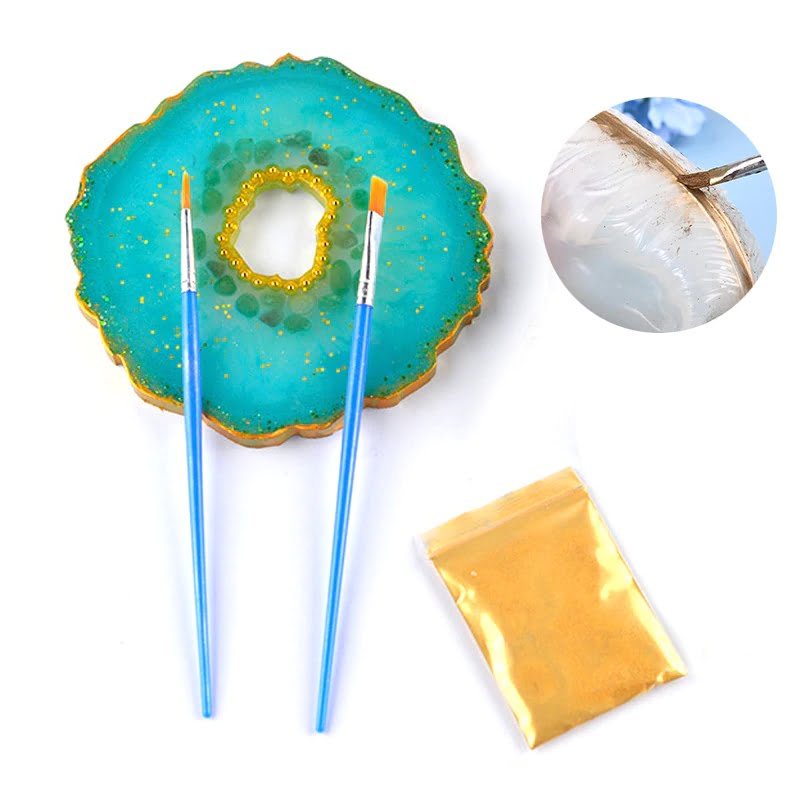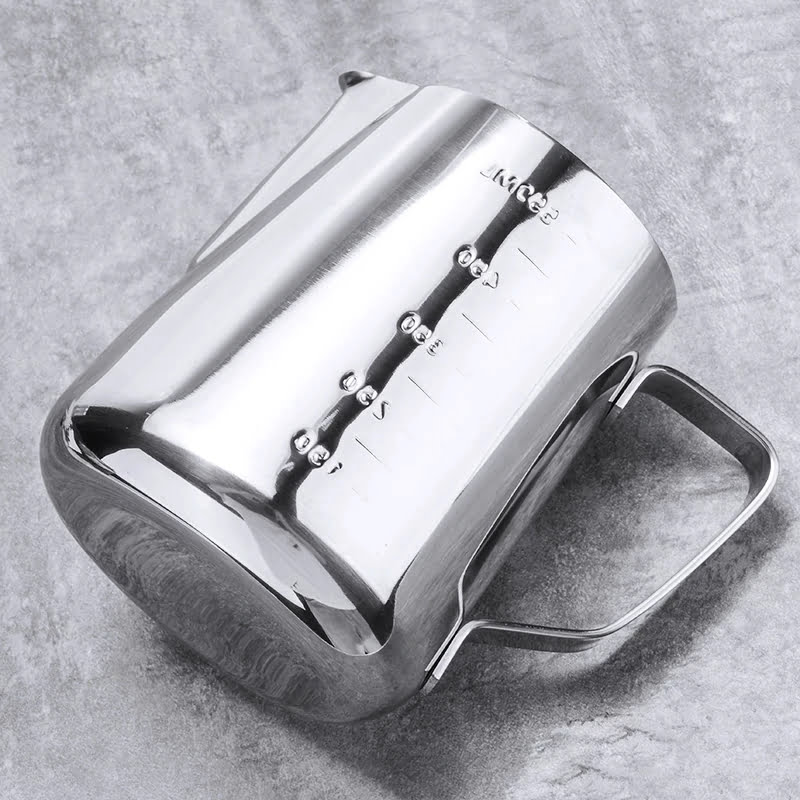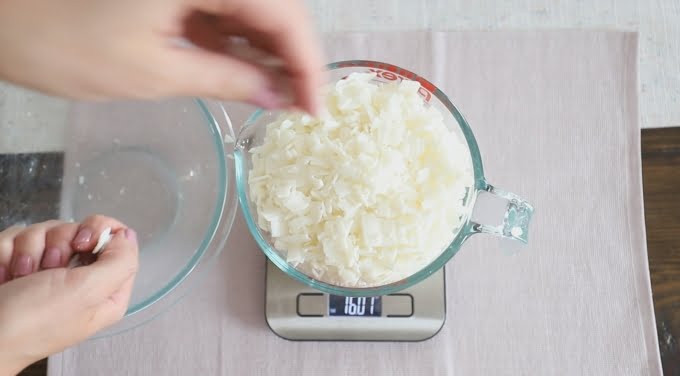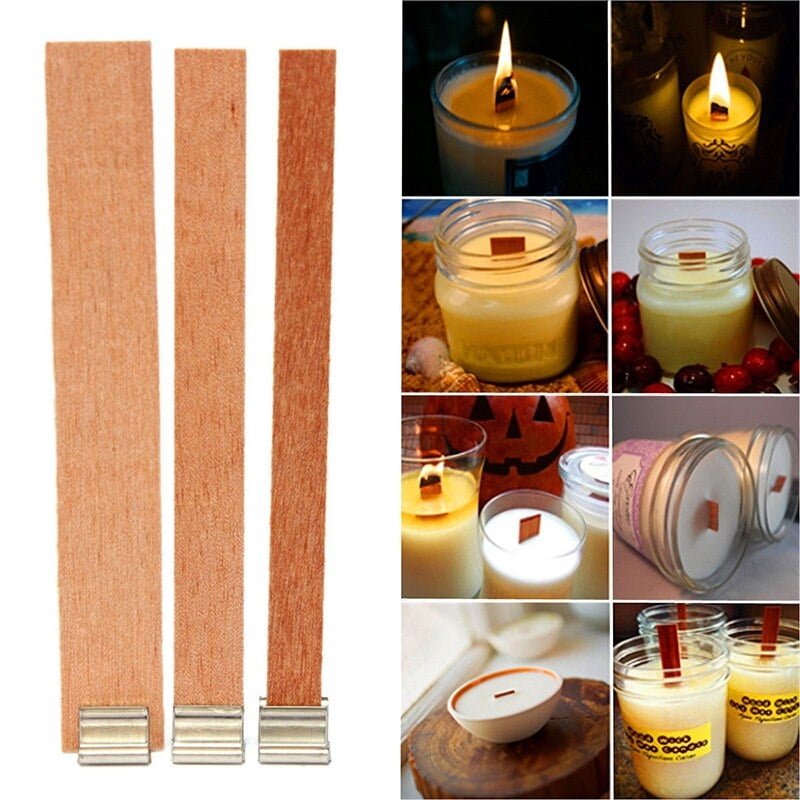When it comes to candle making, there are countless options available for adding color to your creations. While traditional candle dyes are commonly used, curiosity has sparked around the possibility of using soap dye as an alternative option.
In this article, we will delve into the world of soap dye and explore whether it can be effectively used in candle making. We will discuss the potential benefits and limitations of using soap dye, as well as the differences between soap dye and candle dye.
Soap dye, as its name suggests, is primarily designed for use in creating vibrant and colorful bars of soap. However, many crafters have wondered if this type of dye could also work in candle making.
The main allure lies in the variety of unique colors and shades that can be achieved with soap dyes, which may not be readily available with standard candle dyes. By exploring the compatibility of soap dye in candle making, we aim to provide insights into whether it is a viable option for those seeking to experiment with their candle creations.
Before delving deeper into using soap dye in candles, it is important to understand the fundamental differences between soap dye and candle dye. Soap dyes and candle dyes are formulated differently due to their respective purposes and intended applications. These variations result in differences in composition, characteristics, and behavior when exposed to heat or fragrance oils. By grasping these distinctions, we can better understand how each type of dye may impact the final outcome of our candles.
Join us on this journey as we venture into the realm of combining soap dyes and candles. We will investigate how soap dye influences various aspects such as scent throw, burn time, and overall quality of candles.
Additionally, we will address any potential safety hazards or health risks associated with using soap dye in candles and provide tips for ensuring a safe crafting experience. Let’s determine if incorporating soap dye into your candle-making ventures is a creative avenue worth pursuing or if sticking to traditional candle dyes is the preferred choice.
Understanding the Differences Between Soap Dye and Candle Dye
Soap dye and candle dye may seem similar, but they actually have distinct differences in their composition and characteristics. Understanding these differences is essential for successful candle making.
Soap dye is specifically formulated for use in soap making and has properties that allow it to mix well with soap bases. It typically comes in liquid or powder form and is highly concentrated, requiring only a small amount to achieve vibrant colors. Soap dyes are often water-soluble, making them easy to incorporate into the soap mixture during the manufacturing process.
They may also be oil-soluble, which allows for more versatility in color choices. However, soap dyes are designed to be used with specific pH levels found in soaps, which may affect their performance when used in candles.
In contrast, candle dyes are specially created for candle making and take into consideration factors such as melt point and burn time. These dyes come in various forms including liquid, powder, chips, or blocks. Candle dyes are usually non-water soluble but easily dissolve in melted wax due to their compatibility with the wax matrix.
They are formulated to withstand high temperatures without losing their vibrancy or stability during the burning process. Candle dyes are often formulated with additives like UV inhibitors to prevent fading from exposure to sunlight.
While both soap dye and candle dye serve different purposes, there may be instances where a candle maker wants to experiment with using soap dye in their candle-making process. However, it is important to consider the potential effects on scent throw, burn time, and overall quality of the candles when using soap dye instead of dedicated candle dyes.
The higher pH levels found in soap can affect the fragrance oils used in candles, potentially resulting in weaker scent throw or even discoloration of the wax. Additionally, using soap dye may impact burn time as it might not be formulated to withstand high temperatures as effectively as candle dye.
Understanding the distinctions between these two types of dyes is crucial for making informed decisions in candle making. While soap dye may provide an interesting option for experimenting with colors, it is important to be aware of its limitations and potential effects. It is recommended to conduct small tests or consult with experienced candle makers before incorporating soap dye into your candle-making process to ensure optimal results.
Exploring the Compatibility of Soap Dye in Candle Making
When it comes to candle making, there is always a desire to experiment with different types of dyes to achieve unique and vibrant colors. One question that often arises is whether soap dye can be effectively used in candle making. In this section, we will explore the compatibility of soap dye in candle making and discuss the potential effects on scent throw, burn time, and overall quality of the candles.
Soap dye, as the name suggests, is specifically formulated for use in soap making. It is typically water-based and contains ingredients that are safe for skin contact. On the other hand, candle dye is designed to blend well with wax and withstand high temperatures without bleeding or fading. The main distinction between these two types of dyes lies in their composition and purpose.
Using soap dye in candle making may have some limitations. Due to its water-based nature, soap dye does not mix well with wax, which is an oil-based substance. This can lead to poor dispersion and uneven coloring in the final product. Additionally, since soap dyes are formulated for skin contact rather than burning, they may not perform optimally when exposed to heat from a lit candle.
To evaluate the compatibility of soap dye in candle making, it is essential to consider factors such as scent throw and burn time. Scent throw refers to the aroma released by a candle when it burns. Some candle makers have reported that using soap dye can affect scent throw negatively, resulting in weaker or distorted fragrances.
Burn time refers to how long a candle lasts before fully consumed. Soap dyes may impact burn time by altering the combustibility properties of the wax or causing uneven melt pools.
While it may be tempting to use soap dye due to its diverse color options and availability, it is important to weigh these potential drawbacks against your desired outcomes for your candles. To ensure a safe and successful candle-making experience if using soap dye, it is recommended to conduct small-scale tests or seek advice from experienced candle makers who have experimented with this alternative dye option.
| Effect | Soap Dye Use in Candle Making | Candle Dye Use in Candle Making |
|---|---|---|
| Scent Throw | Potentially weaker or distorted fragrances | Designed to work well with fragrance oils and result in optimal scent throw |
| Burn Time | Potential impact on the combustibility properties of the wax or uneven melt pools, which can affect burn time | Specifically formulated to maintain consistent burn times and prevent any adverse effects on candles’ performance |
Evaluating the Safety and Health Concerns of Soap Dye in Candles
When it comes to using soap dye in candle making, it is important to consider the potential safety and health concerns associated with this practice. While soap dye may seem like an appealing option due to its vibrant colors and availability, it is crucial to understand any risks involved before incorporating it into your candle-making process.
One potential concern when using soap dye in candles is the risk of flammability. Unlike candle dyes specifically formulated for candle making, soap dyes may contain ingredients that can increase the likelihood of a candle catching fire. It is essential to prioritize safety by selecting dyes that are flame-retardant and safe for use in candles.
Additionally, some soap dyes may not be skin-safe or non-toxic when burned, which can pose health risks if they come into contact with the skin or are inhaled. To ensure a safe candle-making experience, always check the product label for any warnings or precautions provided by the manufacturer. If there are no clear indications about the safety of a particular soap dye, it is advisable to refrain from using it in candles.
To minimize safety and health concerns when experimenting with soap dyes in candle making, here are some tips:
- Research Brands: Look for reputable brands that specialize in producing colorants for candle making. These companies often provide detailed information about their products’ safety profiles.
- Perform Patch Tests: Before creating a large batch of candles with a new soap dye, perform a small test by making one or two candles first. Monitor their burn time, scent throw, and any adverse reactions such as smoke or irritation.
- Ventilation: Ensure you have proper ventilation when melting your wax and adding the dye to minimize inhalation exposure from fumes.
- Use Protective Gear: Wear gloves and protective eyewear when handling concentrated dyes to avoid direct contact.
Conducting a Comparative Analysis of Soap Dye and Candle Dye
Visual Outcomes of Soap Dye in Candle Making
One of the main considerations when deciding whether to use soap dye in candle making is the visual outcome it produces. Soap dye and candle dye differ in their composition and formulation, which can result in variations in color intensity, vibrancy, and evenness when applied to candles.
When using soap dye, it is important to note that it is primarily formulated for soapmaking purposes. It may not blend as smoothly with the wax base compared to specialized candle dyes. Soap dyes are often water-based or oil-based, which can lead to inconsistent dispersion within the wax. As a result, you may notice specks or streaks in the colored areas of your candles.
In contrast, candle dyes are specifically designed for use in wax and tend to offer more predictable and reliable results. These dyes typically come in concentrated liquid or solid forms that easily dissolve into the melted wax without affecting its consistency or texture. They offer a wide range of vibrant colors with excellent color saturation and uniformity.
Pros and Cons of Using Soap Dye vs. Candle Dye
While soap dye may not provide the same level of consistency and uniformity as candle dye, it does have some advantages worth considering. Soap dyes often offer a broader range of bright hues compared to traditional candle dyes. If you’re looking for bold and unique colors for your candles, experimenting with soap dyes could be an option.
Additionally, soap dyes are usually readily available at craft stores and online retailers that specialize in soapmaking supplies. They may also be more cost-effective than specialized candle dyes, making them an attractive choice for beginners or hobbyists on a budget.
However, it is important to keep in mind that using soap dye in candle making may affect other aspects of the candles’ performance beyond just their appearance. Scent throw, burn time, and overall quality of the candles could be impacted by the presence of soap dye. It’s essential to thoroughly test and evaluate these factors before committing to using soap dyes in all your candle creations.
Side-by-Side Examples: Soap Dye vs. Candle Dye
To fully understand the differences between soap dye and candle dye, it can be helpful to compare them directly through side-by-side examples. By creating candles using both types of dyes and comparing their visual outcomes, you can better assess their individual strengths and weaknesses.
When conducting this comparative analysis, consider factors such as color intensity, vibrancy, evenness, and any noticeable irregularities or flaws in the finished candles. Take note of how each dye performs in terms of blending with the wax and whether any additional steps or techniques are required to achieve the desired coloring effect.
Remember that individual preferences and goals might vary when it comes to candle making. Hence, what may be considered a drawback for one person could be desirable for another. By closely analyzing the visual results obtained with soap dye and candle dye, you can make a more informed decision about which option aligns best with your specific creative vision and priorities.
Exploring Alternative Natural Colorants for Candle Making
Potential benefits of using natural colorants
When it comes to candle making, there is an increasing interest in incorporating natural colorants as an alternative to synthetic dyes. Natural colorants offer a range of benefits that may appeal to candle makers. One of the main advantages is the ability to create unique and vibrant colors using plant-based sources. From powdered herbs like turmeric and hibiscus to fruit and vegetable extracts, natural colorants provide a wide array of options for achieving desired hues.
Another benefit of using natural colorants in candle making is the potential for enhanced aromatherapy effects. Certain plants and herbs used for coloring candles are known for their aromatic properties. For example, lavender or chamomile infused candles not only add a lovely purple or yellow hue but can also offer calming and relaxing scents that promote tranquility.
Additionally, candles made with natural colorants tend to have a more earth-friendly appeal. Many consumers nowadays prioritize sustainability and eco-conscious choices. By opting for natural alternatives, such as powdered plant dyes or even recycled materials, candle makers can align their products with these growing consumer demands.
Compatibility with candle making
The use of natural colorants in candle making requires some understanding of their compatibility with different base materials. While some dyes may work well with certain waxes, they might not perform as effectively with others. It is important to conduct small test batches before committing to larger-scale productions.
Natural colorants tend to have different binders and solubility levels compared to synthetic dyes commonly used in candles. Consequently, some additional steps might be necessary when mixing them into your wax blend or incorporating them into your preferred colored layers or designs.
One option to enhance compatibility is to use oil-soluble natural colorants rather than water-soluble ones when working with certain waxes or additives that are oil-based. Alternatively, creating a tinted wax or using natural colorants as additives in the form of botanical embeds can be an effective way to introduce color while preserving compatibility.
Incorporating natural colorants for unique and sustainable candles
As candle makers increasingly seek alternatives to synthetic dyes, exploring natural colorants offers an exciting path towards creating unique and sustainable candles. The benefits of using plant-based sources not only lie in the vibrant colors that can be achieved but also in the potential aromatherapy effects and eco-friendly appeal.
However, it is essential to consider compatibility with different waxes and additives when incorporating natural colorants into candle-making processes. By experimenting with various options, candle makers can successfully create stunning candles that align with their desired aesthetic and values.
Sharing Expert Opinions and Experiences on Using Soap Dye in Candle Making
One of the best ways to make an informed decision about using soap dye in candle making is to learn from the experiences and insights of industry experts or experienced candle makers. These individuals have firsthand knowledge and can provide valuable advice on achieving desired results while using soap dye. Their opinions can help shed light on the compatibility, benefits, and limitations of using this type of dye in candle making.
Many experienced candle makers have experimented with soap dye and have found that it can produce vibrant and unique colors in candles. They often suggest starting with a small amount of dye and gradually adding more until the desired shade is achieved. However, it is important to note that soap dye may not produce the same intense or long-lasting color effects as traditional candle dyes.
According to expert candle makers, one potential drawback of using soap dye is its impact on scent throw. Soap dyes are often made with synthetic ingredients that can interfere with the release of fragrance oils in candles. This means that using soap dye may result in a weaker scent or reduced throw compared to candles colored with traditional candle dyes.
In terms of burn time and overall quality, some experts have reported that candles colored with soap dye may burn faster or have a shorter shelf life. This could be due to certain additives or chemicals present in soap dyes that affect the performance of the wax when burned. It is advisable to conduct test burns before committing to larger batches if you decide to use soap dye in your candles.
To ensure a safe candle-making experience when using soap dye, experts recommend following safety guidelines such as wearing protective gloves, goggles, and working in a well-ventilated area. It is crucial to read product labels carefully, as some soap dyes may contain substances that are not suitable for burning or can release toxic fumes when heated.
Overall, while there are mixed opinions on using soap dye in candle making, it is evident that careful experimentation and consideration of individual preferences are key. It may be worth exploring alternative natural colorants or conducting side-by-side comparisons with traditional candle dyes to determine the best option for achieving desired results in candle coloring.
Conclusion
In conclusion, the topic of using soap dye in candle making has been explored from various angles. The key focus was understanding the differences between soap dye and candle dye, evaluating the compatibility of soap dye in candle making, and exploring alternative natural colorants for candles.
It is clear that soap dye and candle dye have distinct compositions and purposes. Soap dye is designed to color soap and may not perform as effectively or produce desired results when used in candles. Candle dyes, on the other hand, are specifically formulated for use in candles and are more likely to deliver consistent color results.
When considering using soap dye in candle making, it is important to take into account potential effects on scent throw, burn time, and overall quality of the candles. Soap dyes may not be as compatible with these factors compared to specialized candle dyes. Additionally, there may be safety hazards or health risks associated with using soap dyes that need to be taken into consideration.
Although experimentation with different types of dyes is always encouraged in creative pursuits like candle making, it is recommended to explore alternative natural colorants for coloring candles. Plant-based dyes or powdered herbs can provide a safe and natural option for achieving beautiful colors while maintaining the integrity of your candles.
Frequently Asked Questions
Is candle dye the same as soap dye?
Candle dye and soap dye are similar in terms of their purpose – to add color to a product – but they are not exactly the same. Candle dye is specifically formulated for use in candles, while soap dye is designed for use in soap making.
The main difference lies in the composition of the dyes and their ability to withstand different temperatures. Candle dye is typically made to withstand the higher melting point of candle wax, ensuring that the color remains stable throughout the burning process, whereas soap dye may not be able to handle such high temperatures without fading or bleeding.
Can you use any dye for candles?
While it is possible to use certain types of dyes for candles, it is generally recommended to use dyes specifically made for candle making. This is because regular dyes may not have been tested for safety or compatibility with candles and could potentially result in issues such as poor color dispersion, uneven burning, or even safety hazards.
Candle-specific dyes are formulated to work well with different types of waxes and provide consistent and vibrant colors when used according to guidelines. Thus, it’s advisable to choose dyes labeled specifically for candle making to ensure optimal results.
What can I use instead of dye for candle?
If you’re looking for alternatives to traditional dye for candles, there are a few options you can explore. One possibility is using natural ingredients like spices or herbs that can impart a subtle hue when incorporated into melted wax. For example, cinnamon can lend a warm brownish-red tone, turmeric can produce a yellow shade, or beetroot powder can create a pinkish hue.
It’s important to note that natural ingredients might not yield as intense colors as commercial dyes do. Another option is experimenting with colored wax sheets or crayons meant for candle decoration; these can be shaved into the melted wax and will melt along with it, adding color as they blend in. However, make sure that any alternative you choose is suitable for candle making purposes and won’t compromise the quality or safety of your candles when burned.

Welcome to my candle making blog! In this blog, I will be sharing my tips and tricks for making candles. I will also be sharing some of my favorite recipes.





